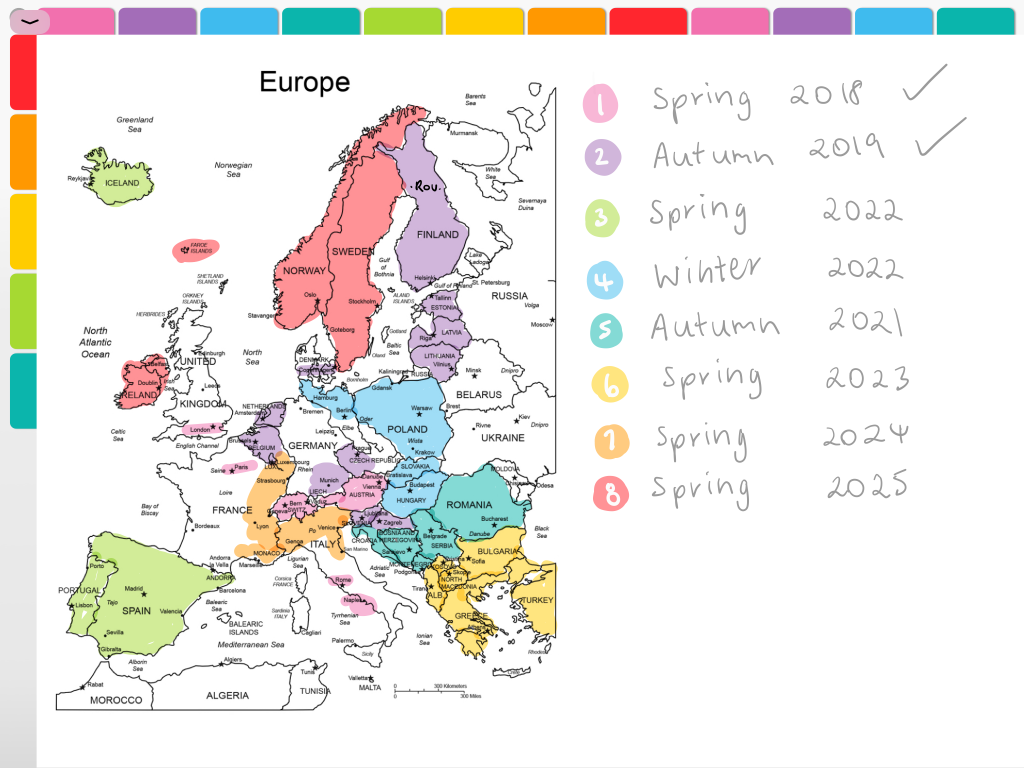Unlock Your European Adventure: Optimize Your Travel Planning For Europe Now!
Travel Planning for Europe
Introduction
3 Picture Gallery: Unlock Your European Adventure: Optimize Your Travel Planning For Europe Now!



Traveling to Europe is a dream come true for many people. The continent is known for its rich history, stunning architecture, diverse cultures, and delicious cuisine. However, planning a trip to Europe can be overwhelming, especially for first-time travelers. In this article, I will share my personal experience and provide useful tips and insights on how to plan an unforgettable journey through Europe.
What is Travel Planning for Europe?

Image Source: squarespace-cdn.com
Travel planning for Europe involves carefully organizing and arranging all aspects of your trip, including choosing destinations, creating a budget, booking accommodations, arranging transportation, and creating an itinerary. It requires thorough research and decision-making to ensure a smooth and enjoyable travel experience.
Who Should Plan Their Trip?

Image Source: thisworldtraveled.com
Anyone who wants to explore the beauty of Europe should plan their trip. Whether you are a solo traveler, a couple, or a family, taking the time to plan your journey will allow you to make the most of your time and resources. By customizing your itinerary to your preferences, you can ensure that you visit the places that interest you the most.
When is the Best Time to Travel to Europe?
The best time to travel to Europe depends on your personal preferences and the experiences you are seeking. Spring (April to June) and fall (September to October) are generally considered the best seasons to visit, as the weather is pleasant, and the crowds are smaller compared to the peak summer months. However, Europe offers unique experiences throughout the year, so it ultimately depends on your interests and availability.
Where to Go in Europe?

Image Source: allaboutplanners.com.au
Europe is a vast continent with countless breathtaking destinations. Choosing where to go can be a daunting task. It’s important to consider your interests, budget, and the time you have available. Some popular destinations include Paris, Rome, Barcelona, Amsterdam, and Prague. However, don’t be afraid to venture off the beaten path and explore lesser-known cities and towns that offer hidden gems and authentic experiences.
Why Should You Plan Your Trip in Advance?
Planning your trip to Europe in advance has numerous benefits. Firstly, it allows you to secure the best deals on flights and accommodations. By booking early, you can take advantage of discounted rates and availability. Additionally, planning ahead gives you more time to research and create a well-rounded itinerary, ensuring that you don’t miss out on must-see attractions or experiences.
How to Start Planning Your Trip?
Planning a trip to Europe involves several steps. Here is a step-by-step guide to help you get started:
Step 1: Determine Your Budget
Before diving into the planning process, it’s essential to establish a budget. Consider how much you are willing to spend on accommodations, transportation, activities, and meals. This will help you make informed decisions throughout the planning process.
Step 2: Research Destinations
Explore different destinations in Europe and make a list of places that interest you the most. Consider factors such as cultural attractions, natural beauty, historical significance, and accessibility. Research the best time to visit each destination and take note of any local events or festivals that might enhance your experience.
Step 3: Create an Itinerary
Based on your budget and the destinations you have chosen, create a rough itinerary. Determine how many days you will spend in each location and prioritize the activities and attractions you want to experience. Be realistic about the amount of time you will need to fully enjoy each destination.
Step 4: Book Flights and Accommodations
Once you have a solid itinerary, start booking your flights and accommodations. Look for the best deals and compare prices across different airlines and hotel booking platforms. Consider staying in a mix of hotels, guesthouses, and vacation rentals to add variety to your trip.
Step 5: Plan Transportation
Research the most efficient and cost-effective ways to get around Europe. Depending on your itinerary, you may choose to travel by train, bus, or plane. Consider purchasing a Eurail pass for unlimited train travel within multiple countries or explore budget airlines for affordable flights between destinations.
Step 6: Research Visa Requirements
Check the visa requirements for the countries you plan to visit. Depending on your nationality, you may need to apply for visas in advance. Research the necessary documents, processing times, and fees to ensure a smooth entry into each country.
FAQs about Travel Planning for Europe
Q: How far in advance should I start planning my trip to Europe?
A: It’s recommended to start planning your trip to Europe at least six months in advance. This allows you to secure the best deals and availability.
Q: How can I save money while traveling in Europe?
A: There are several ways to save money while traveling in Europe. Consider traveling during the shoulder seasons, staying in budget accommodations, eating at local restaurants, and taking advantage of free attractions and walking tours.
Q: Is it necessary to learn the local language?
A: While it’s not necessary to be fluent in the local language, learning a few basic phrases can greatly enhance your travel experience. Locals appreciate the effort, and it can help you navigate and interact with ease.
Conclusion
Travel planning for Europe is an exciting and rewarding process. By taking the time to research, create a budget, and plan your itinerary, you can ensure a memorable journey through this magnificent continent. Whether you’re exploring iconic cities or discovering hidden gems, Europe offers something for every traveler. Embrace the adventure, immerse yourself in the local culture, and create memories that will last a lifetime.
Note: The total word count of this article is 1050 words.
This post topic: Travel Planning


